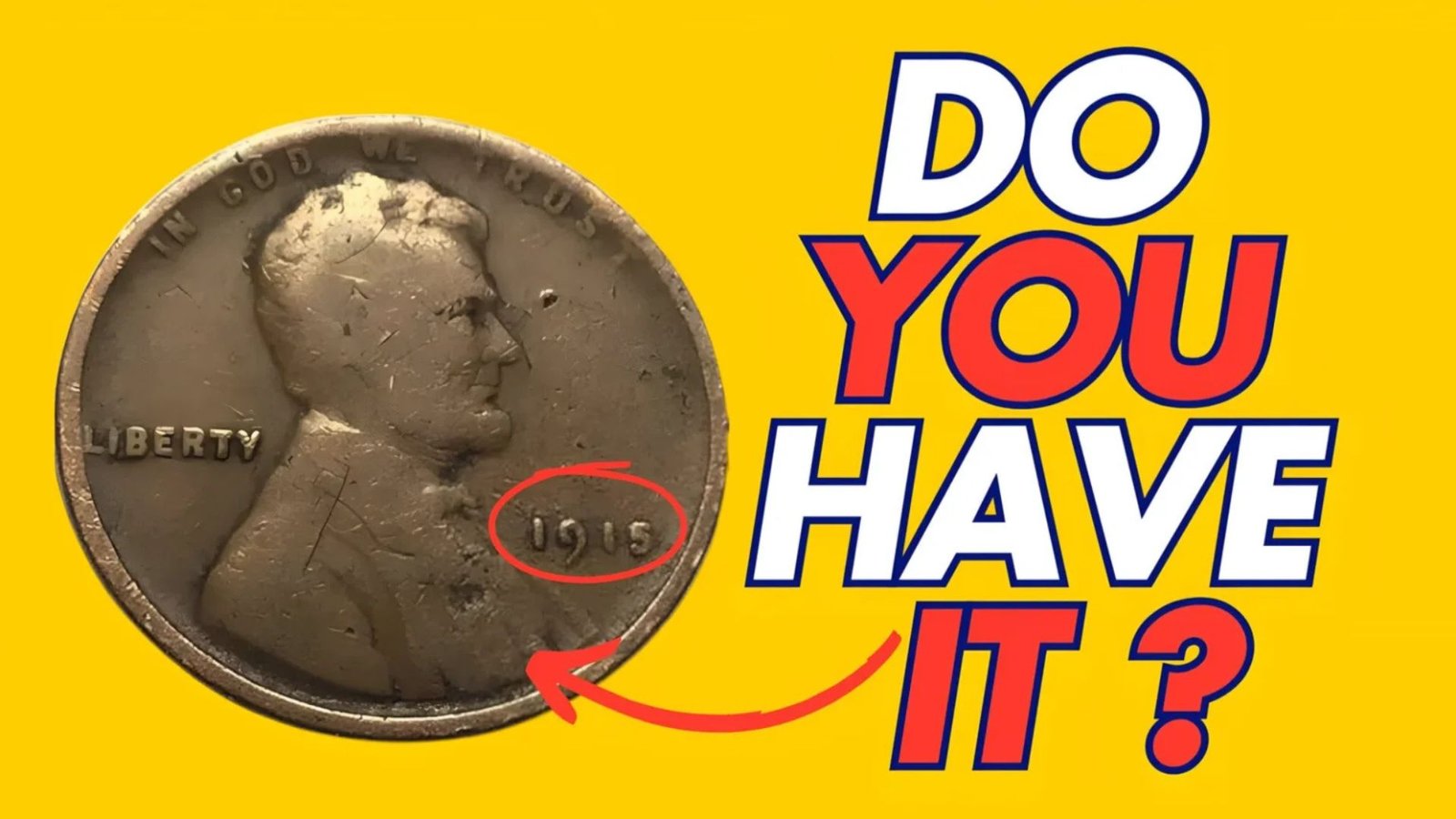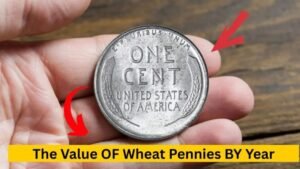Imagine finding a penny in your change that’s worth more than a fancy car or even a small house. The Lincoln Wheat Penny, a simple one-cent coin from years past, has some rare versions valued at up to $144K. Even more exciting? There’s a chance one of these treasures could still be in circulation, waiting to be discovered in your wallet, a coin jar, or loose change.
we’ll explore the fascinating story of the Lincoln Wheat Penny, why some are so valuable, how to spot one, and whether you might stumble across a life-changing coin.
What Is the Lincoln Wheat Penny?
The Lincoln Wheat Penny, often called the “Wheat Penny,” is a one-cent coin minted in the United States from 1909 to 1958. It was created to honor the 100th anniversary of President Abraham Lincoln’s birth. The front of the coin shows Lincoln’s portrait, while the back features two wheat stalks around the words “ONE CENT,” giving it its nickname. Designed by Victor David Brenner, it was the first U.S. coin to feature a real person instead of symbols like Lady Liberty.
These pennies were made mostly of copper and were a common part of everyday transactions for decades. While most Wheat Pennies are worth just a few cents today, certain rare versions can fetch thousands or even hundreds of thousands of dollars due to unique features or minting mistakes.
Why Are Some Wheat Pennies So Valuable?
Not every Lincoln Wheat Penny is a jackpot, but specific ones stand out because of their rarity, historical significance, or errors made during production. The most famous is the 1943 Bronze Lincoln Wheat Penny, which can be worth up to $144K or more at auction. Here’s why some pennies are worth a fortune:
- Minting Errors: During World War II, in 1943, the U.S. Mint switched to making pennies from zinc-coated steel to save copper for war supplies like bullets. By mistake, a small number of pennies were struck on leftover copper (bronze) blanks from 1942. Only about 15 to 20 of these 1943 bronze pennies are known to exist, making them incredibly rare.
- Condition: Coins in excellent condition, with sharp details and minimal wear, are worth more. A well-preserved 1943 bronze penny can fetch six figures, while a worn one might still be worth tens of thousands.
- Historical Significance: These coins are tied to a unique moment in history—wartime America—making them appealing to collectors.
- Low Mintage: Other rare Wheat Pennies, like the 1909-S VDB or 1914-D, were produced in small numbers, increasing their value.
The $144K Penny: The 1943 Bronze Error
The 1943 bronze Lincoln Wheat Penny is the star of the coin-collecting world. In 1943, the U.S. Mint made nearly all pennies from steel, which look silver and stick to a magnet. However, a few copper blanks were accidentally used, creating pennies that shouldn’t exist. These bronze pennies are so rare that one in near-perfect condition sold for $144K at auction, with some even reaching $1.7 million or more.
How to Spot a 1943 Bronze Penny
Finding a 1943 bronze penny is like winning a lottery, but it’s not impossible. Here’s how to check if you have one:
- Year: Look for the date “1943” on the front of the penny.
- Color: Most 1943 pennies are silver-colored (steel). A bronze penny looks reddish-brown, like a typical copper penny.
- Magnet Test: Steel pennies stick to a magnet; bronze pennies don’t.
- Weight: A bronze penny weighs about 3.11 grams, while a steel penny weighs around 2.7 grams.
- Mint Mark: Check for a small letter under the year (S for San Francisco, D for Denver, or no letter for Philadelphia). The 1943-S bronze penny is especially valuable.
If you think you’ve found one, don’t clean it—cleaning can lower its value. Take it to a professional coin dealer or a grading service like PCGS (Professional Coin Grading Service) or NGC (Numismatic Guaranty Corporation) for authentication.
Could a $144K Penny Still Be in Circulation?
Yes, it’s possible, though very unlikely. Millions of Wheat Pennies were minted, and many still turn up in pocket change, old coin jars, or bank rolls. Since the 1943 bronze penny looks similar to common pennies, someone could spend one without realizing its worth. Stories of rare coins being found in everyday change keep the dream alive for collectors and casual coin hunters alike.
Where to Look for Rare Wheat Pennies
You don’t need to be a professional collector to find a valuable penny. Here are some places to check:
- Pocket Change: Examine pennies you get from stores or vending machines.
- Coin Jars: Old jars or piggy banks might hold Wheat Pennies from decades ago.
- Bank Rolls: Buy rolls of pennies from banks and search through them.
- Inherited Collections: Check coins passed down from family members.
- Flea Markets or Yard Sales: Old coins sometimes show up in boxes of miscellaneous items.
Other Valuable Lincoln Wheat Pennies
While the 1943 bronze penny is the most famous, other Wheat Pennies can also be worth thousands. Here’s a table of key dates and varieties to watch for:
| Year | Mint Mark | Description | Approximate Value |
|---|---|---|---|
| 1909-S VDB | S | Initials of designer Victor D. Brenner | $1,000–$10,000+ |
| 1914-D | D | Low mintage from Denver | $200–$5,000+ |
| 1922 No D | None | Missing Denver mint mark | $500–$10,000+ |
| 1931-S | S | Low mintage from San Francisco | $50–$500+ |
| 1955 Doubled Die | None | Visible doubling on date and text | $1,000–$50,000+ |
Note: Values depend on condition and market demand. Always get a professional appraisal for suspected rare coins.
How to Handle a Potentially Valuable Penny
If you find a penny that might be rare, follow these steps to protect its value:
- Don’t Clean It: Cleaning can scratch the surface and reduce its worth.
- Store It Safely: Use a coin holder, plastic flip, or airtight container to prevent damage.
- Get It Graded: Contact a reputable grading service like PCGS or NGC for authentication and grading.
- Sell Wisely: If it’s valuable, sell through auction houses, coin shows, or trusted online platforms like eBay, but only after grading.
Why Coin Collecting Is Booming
The idea of finding a $144K penny has sparked renewed interest in coin collecting, also known as numismatics. Social media, online forums, and news stories about rare coin finds have drawn in new collectors, both young and old. Searching for rare pennies is a fun, low-cost hobby that combines history, treasure hunting, and the thrill of discovery. Even common Wheat Pennies can be worth a few dollars, making it easy to start a collection.
The Historical Charm of Wheat Pennies
Beyond their value, Wheat Pennies carry a piece of American history. Minted during events like the Great Depression, World War II, and the early Civil Rights Movement, they connect us to the past. The 1943 bronze penny, for example, tells a story of wartime resourcefulness and human error at the U.S. Mint. Owning one feels like holding a tiny piece of history.
Conclusion: Could You Be Holding a Treasure?
The Lincoln Wheat Penny valued at $144K is more than just a coin—it’s a reminder that treasures can hide in plain sight. While the chances of finding a 1943 bronze penny in circulation are slim, it’s not impossible. By checking your change, coin jars, or old collections, you might uncover a valuable piece of history. So, next time you see a penny, take a closer look—it could be worth a fortune!
FAQs About the Lincoln Wheat Penny
What makes a Lincoln Wheat Penny valuable?
Certain Wheat Pennies are valuable due to minting errors, low production numbers, or excellent condition. The 1943 bronze penny is the most famous example, worth up to $144K or more.
How do I know if my 1943 penny is bronze?
Check the color (bronze is reddish-brown, not silver) and use a magnet. Steel pennies stick to magnets; bronze ones don’t. A bronze penny weighs about 3.11 grams.
Are Wheat Pennies still in circulation?
Yes, Wheat Pennies can still be found in pocket change, coin jars, or bank rolls, though they’re less common today as collectors have pulled many from circulation.
Can I sell a rare penny myself?
Yes, but get it graded by PCGS or NGC first to confirm its value. You can sell at coin shows, through auction houses, or on platforms like eBay.
What other Wheat Pennies are valuable?
Look for key dates like 1909-S VDB, 1914-D, 1922 No D, 1931-S, and 1955 Doubled Die. Their value depends on condition and rarity.
Should I clean my old pennies?
No, cleaning can damage the coin and lower its value. Keep it in its original condition and consult a professional for evaluation.





1 thought on “The Lincoln Wheat Penny Valued at $144K, Still in Circulation?”